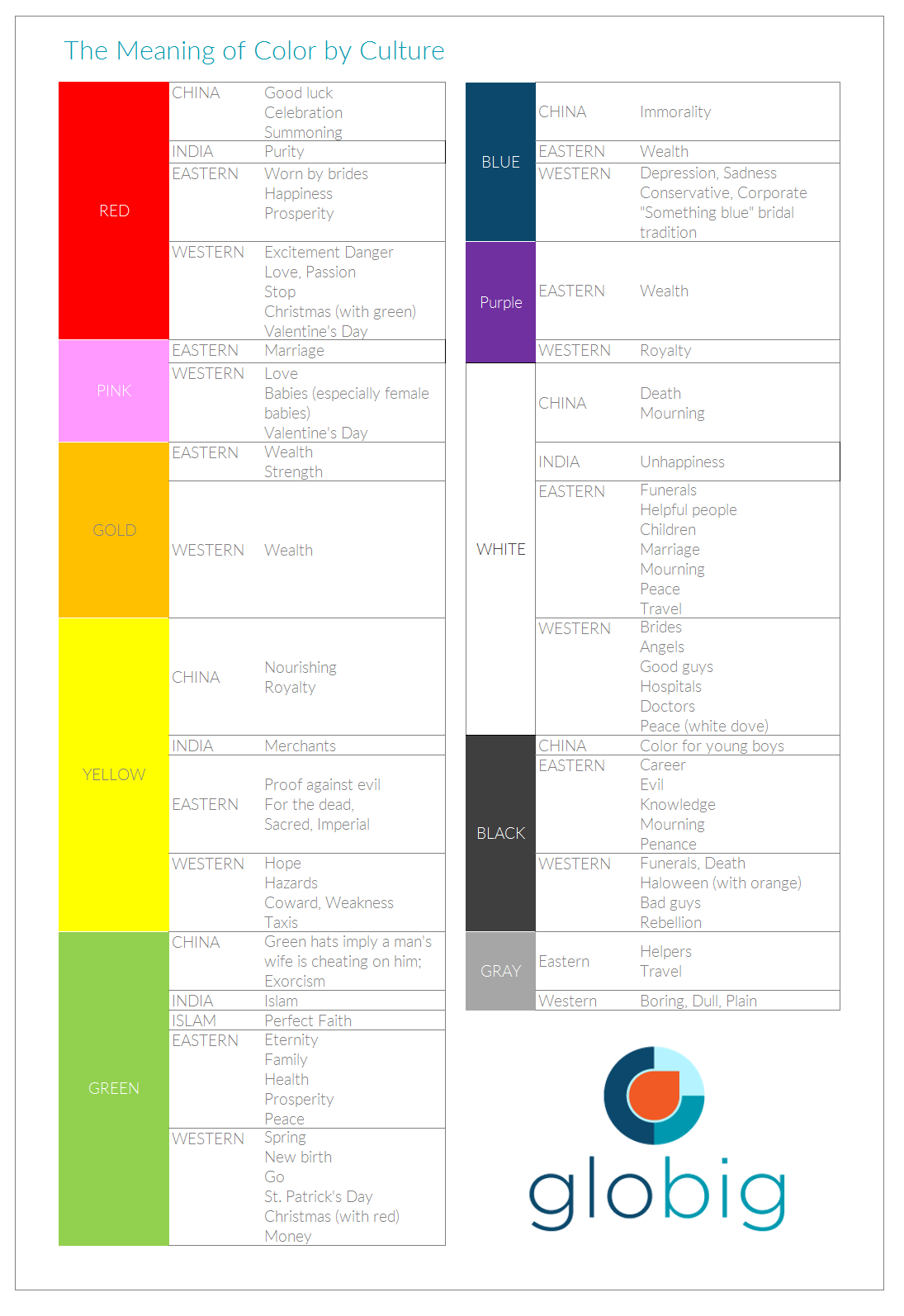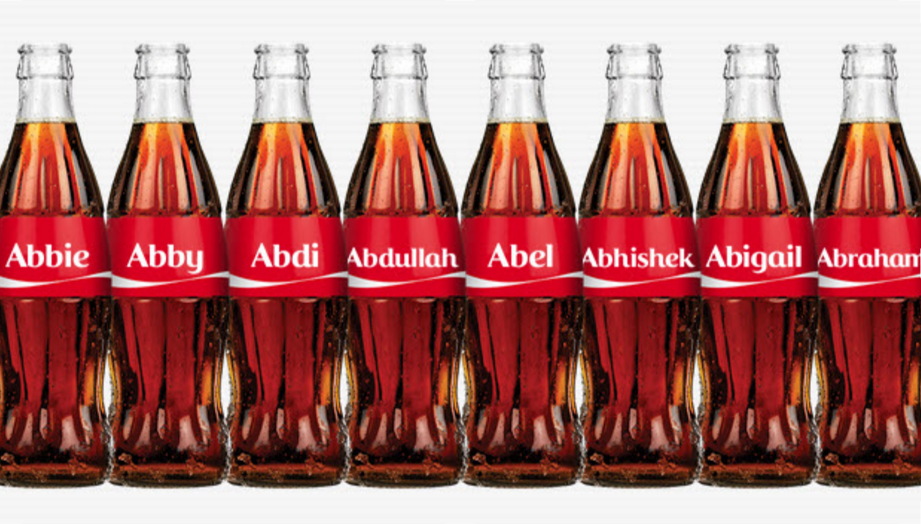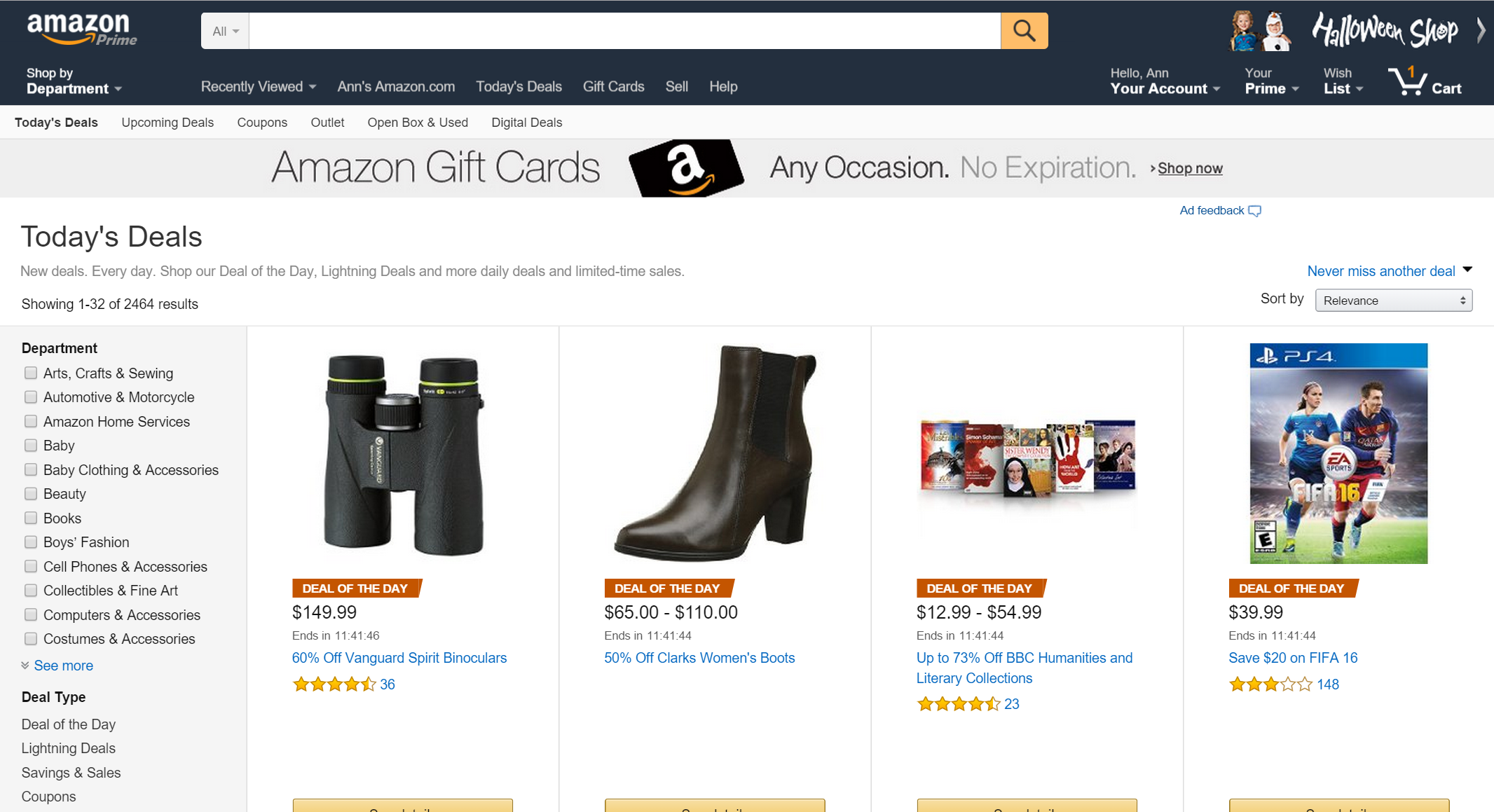
KNOWLEDGE BASE Cultural Localization For Singapore
The information on this page was current at the time it was published. Regulations, trends, statistics, and other information are constantly changing. While we strive to update our Knowledge Base, we strongly suggest you use these pages as a general guide and be sure to verify any regulations, statistics, guidelines, or other information that are important to your efforts.
Cultural Localization in Singapore
Localization is essentially making a product or service appear as if it was developed in the local market, and it's a key component of expanding into new global markets. Cultural localization uses things such as local customs, colors, societal codes and values, and similar cues and sensibilities that are understood by the market. Once you have a better sense for the culture of Singapore, you'll be able to better localize your website and mobile apps for Singapore's culture.
Global strategy, internationalization, localization, globalization
Let’s take a minute to put localization into context with internationalization and having a global strategy, since you will sometimes hear these terms used interchangeably. We'll also give you a quick definition of globalization to help you differentiate it from global strategy.
Global Strategy - At some point, going global has entered your strategy, which is probably what brought you to Globig. Developing a global strategy is the process of addressing all of the logistical and organizational aspects for content, assets, and message across markets and cultures for your global expansion. Think of it as the first step in your process, as the foundation for what comes next. In the process of developing your global strategy you’ll want to consider:
-
The research, identification, market validation, and selection for any new global market
-
The capturing and formalizing of global business requirements
-
Identification of technology standards, available solutions, and how your systems, products, and services integrate with these standards
-
Language differences leading to translation needs
-
Cultural considerations that could impact your product, service, messaging, and interactions
-
Any opportunities for marketing or technological reuse across global markets as you expand
-
Internal alignment and support for globalization, internationalization, and localization
Internationalization (i18n) - This is the process by which you prepare the technical aspects of your product or service to easily be localized, and requires both technical expertise and a knowledge of the markets you plan to enter. It is essentially building flexibility into your coding, site layout, and documents so that you can easily switch from one language to another, from one cultural setting to another. If you have done your i18n correctly, you can much more quickly and cost-effectively localize as you expand.
Localization (l10n) - With localization, you are making a product or service in such a way that it culturally belongs in that market, so that it feels natural and local. For example and depending on the market, localization may include:
-
Changing the language out to the one used in the new market
-
Changing out images, colors, and other visuals to be appropriate for that market
-
New time zones, contact information, hours of operation
Globalization - We've already defined what having a global strategy means. Globalization is not another term for having a global strategy. In fact, they mean very different things. Compare the definition below to the description of Global Strategy above, and you'll see that what you are undertaking is a global strategy, not globalization.
If you understand local culture and etiquette, you will have a better chance of successfully communicating and providing products that fit. We’ll pull some of the information highlighted in the Business Culture in Singapore section to provide background to this discussion.
Cultural localization for Singapore
Cultural refers to things such as:
-
Images, icons, graphics
-
Colors, shapes, sizes, styles
-
Societal codes; i.e. humor, etiquette, rituals, myths, symbols
-
Societal values, power, relationships, beliefs
Images, icons, and graphics
Images, icons, and graphics take on special meaning in a culture, and when combined with other cultural influences, can make or break a marketing campaign’s or service’s success. The way that people perceive and interpret symbols and cultural norms is called Semiotics, and those perceptions vary from country to country.
Semiotics is the study of signs and their associated interpretation or meaning, and it’s the primary way that we understand concepts familiar to us within a culture. Your company’s ability to tap into that interpretation in Singapore will contribute to your success. To avoid conveying your own culture’s meaning of images, text, and sounds, we recommend that you find local specialists to help you in developing products, services,and campaigns that are relevant to Singapore and don’t inadvertently confuse or alienate your potential customers.
This video, which is also available in our Advertising section in Go To Market, gives an overview and should give you a better understanding for what semiotics is all about.
Localizing with color
Color plays an important role in Singapore’s culture. In fact, though we don’t think about it much, color plays an important role in any culture. For instance, have you ever thought about what the color white means? In Western cultures, white is often used to represent the 'good guy', angels, doctors, and peace. However, to the Chinese white signifies death and mourning, and in India, unhappiness. If you launch a campaign showing a smiling, happy person dressed all in white, you will likely confuse your audience and miss the mark with your campaign. Now, imagine if there was a campaign showing an American bride in a red or black dress. That would send a very different message from the expected white. You get the picture.
The colors you use in your app, on your website, or in your marketing materials are very important. The chart below shows how a color can have a different meaning depending on the culture. Quite simply, assuming that colors mean the same thing that they do in your country may sabotage your success. On the other hand, using the right color will help your product or service feel more natural in Singapore.
We recommend that you get local branding and marketing expert help in market to keep you from making color mistakes. At the very least, find some trusted people who can give you some color guidance before you build color into your product or launch a campaign that falls flat.
Coke does localization
You may recall the ‘Share a Coke’ campaign by Coca-Cola, during which Coke put the most popular first names in various countries on their bottles.
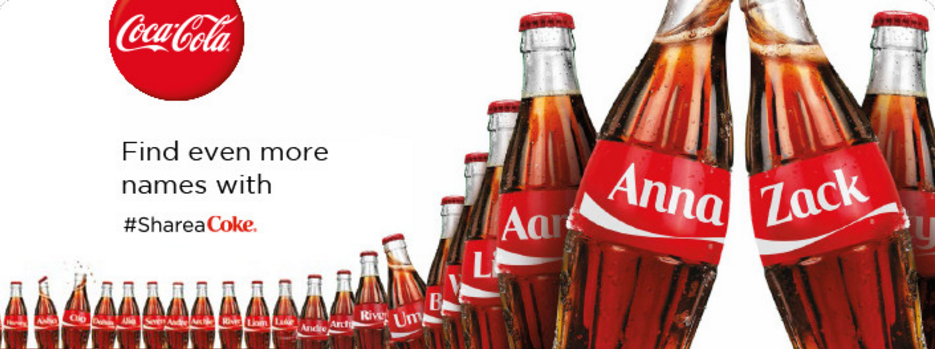
Here’s an example of the nicknames they used, which as you can see, were very generic and could be used in many kinds of relationships. For instance, they offered:
-
BFF
-
Bro
-
Mei Mei (‘little sister’ in Chinese)
-
Jie Jie (‘older sister’ in Chinese)’
-
Di Di (‘younger brother’ in Chinese)
-
Auntie
-
Bestie
-
Bro
-
Dude
-
Hon
-
Wifey
-
Ah Boy
-
Ah Girl
-
I Miss You
-
Hubby
Coke’s Chinese New Year display in Singapore is another example of localization. Luckily for Coke, red is already one of their primary branding colors. And if you refer back to the color chart, you’ll see the happy colors of red and gold used in this display.
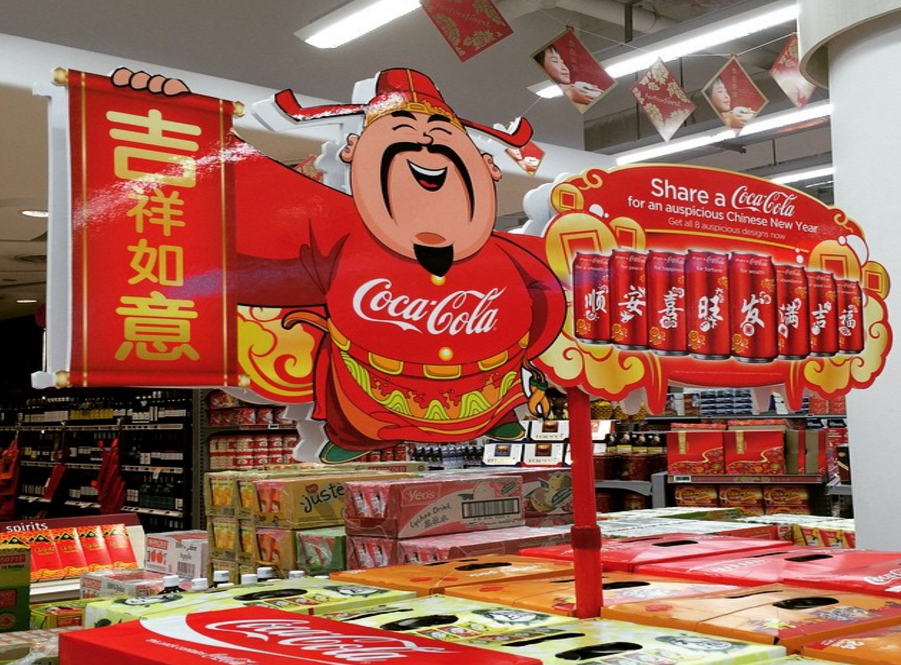
Website style localization
If you spend any time comparing websites from the United States with those in Singapore, you’ll find a difference in the relative ‘busy-ness’ of the average site.
Here is a former homepage for Coca Cola in the U.S.
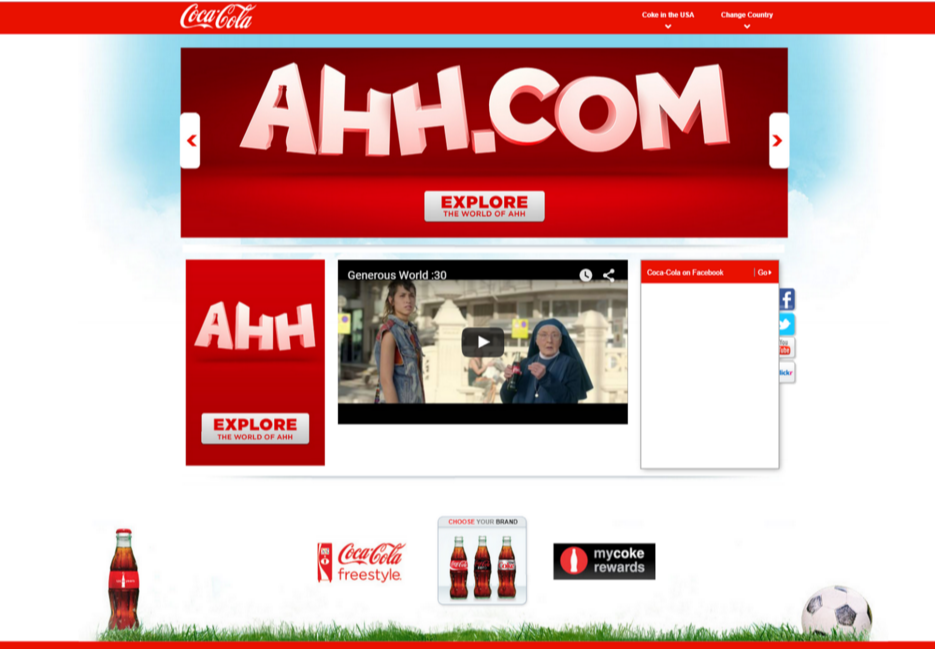
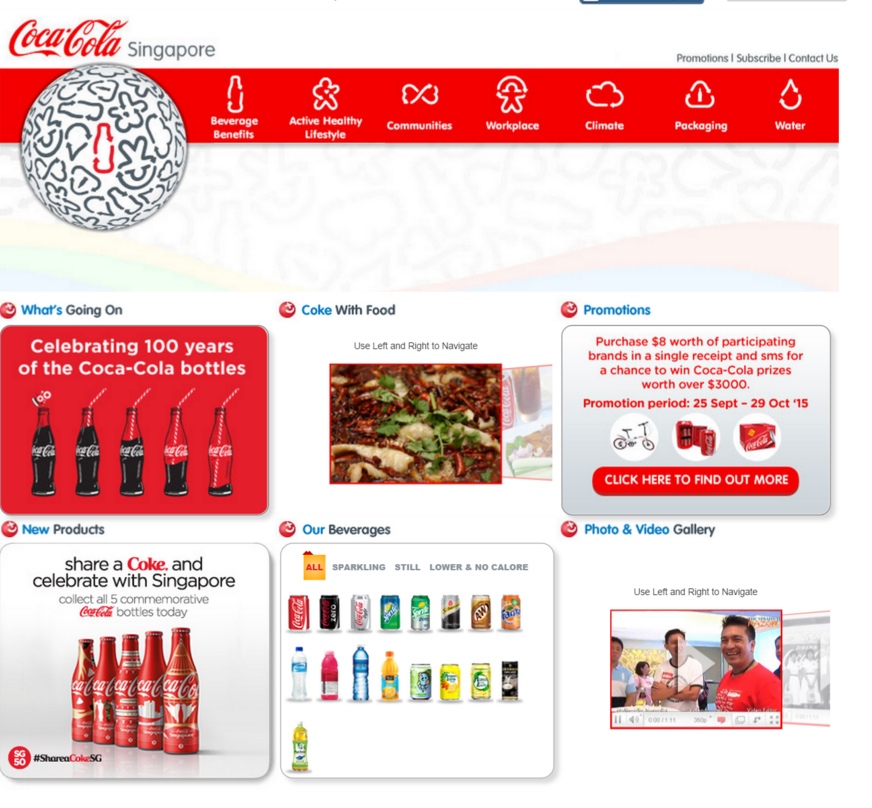
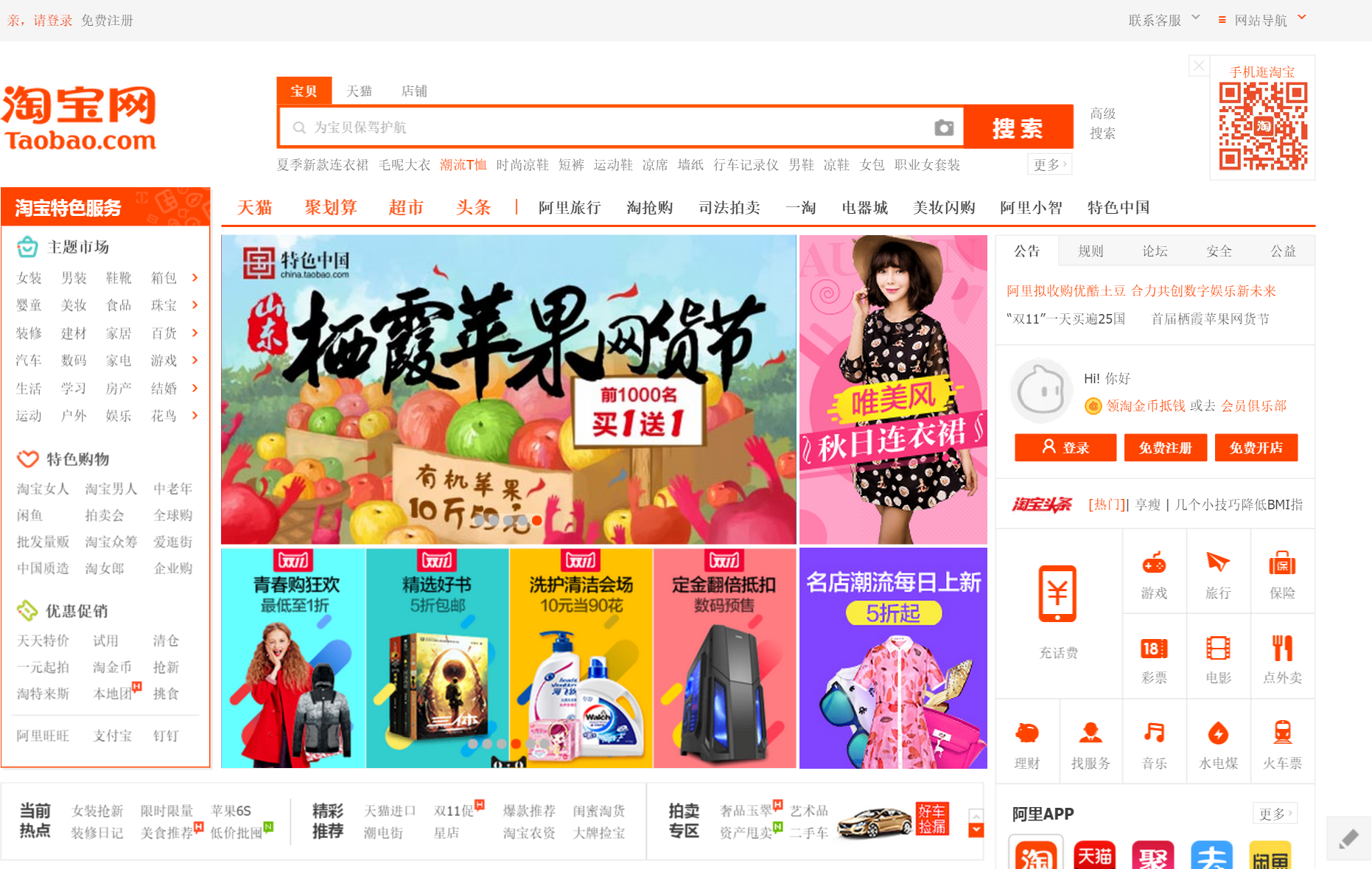
Website localization with images of people
Cultural localization includes any sort of racial appropriateness as well as biases, especially in photography, such as using people that look like they are from the country. Be very careful with this, just because you can’t tell if someone is from a country doesn’t mean that the locals can’t tell. This image was on the Levis Singapore homepage.
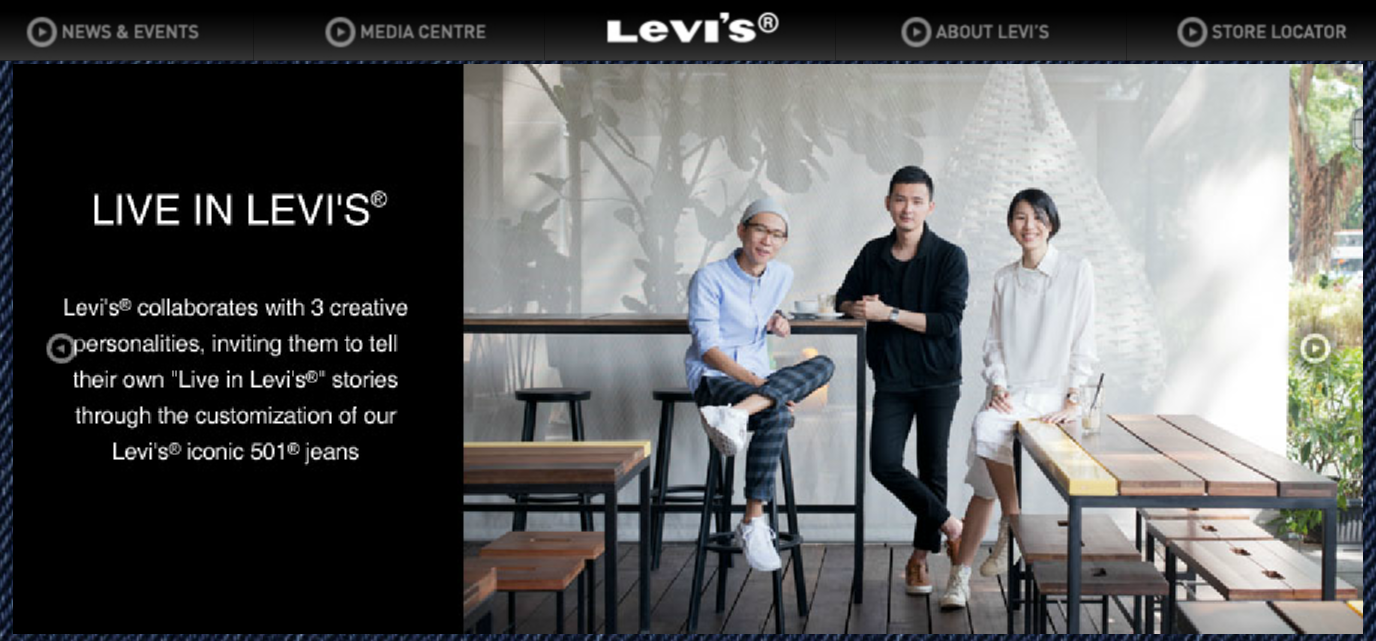
Localization of gestures
Gestures are also local. For instance, thumbs-up means different things in different countries, as does waving. And while touching such as back-splapping and a friendly arm across the shoulder may work in the U.S., it won’t go over well in Singapore.
Be aware of the ways in which your gestures or “body language” may unintentionally offend others in Singapore, and don’t inadvertently offend or confuse your audience by having them in your content or marketing and advertising.
-
Wave all of your fingers on your right hand with your palm facing down if you are calling someone to you
-
If you hit your fist into your cupped hand you will be considered impolite
-
Finger gestures, such as pointing or forming the rounded “okay” sign, are considered rude. It is important to avoid pointing the bottom of your foot at others or using it to move objects. In formal situations, Singaporeans cross their legs at the knee and do not rest their ankle on the opposite knee.
-
Touching another person’s head is considered impolite

One Gesture You Should Avoid in Singapore
While some hand gestures are clearly understood and acceptable in your culture, it’s important to avoid certain gestures that could be misunderstood in other countries. In Singapore, for instance, you should never summon someone by using a curled index finger. It signifies death and is considered bad luck.
We highly recommend having a local review your digital product before launching it to make sure you’re able to have the impact you’re looking for. If you’d prefer not to use one of these services to help with product localization, you can often find people in your community, especially in university towns, that are from the country you’re localizing for or web peer review sites and affordable international survey panels such as AYTM.com.
Singlish
In our section on Language Localization, we talk about Singlish. Singlish emerged when Singapore gained independence 50 years ago and it was decided that English would be the official language among all of the ethnic groups. While the plan was for English to be used everywhere, the various language groups started to incorporate their own languages into English, and Singlish was the result. Here’s a couple of examples.
While English is still the language of formal business settings, at school, and in government, Singlish has become an accepted language that coexists with English. Singlish has also become a class indicator. People who only speak Singlish are considered less sophisticated, while someone who only speaks English could be considered as ‘posh’.
Over time, the official resistance to Singlish has turned into acceptance. In fact, as you’ll see below, it has even been incorporated into the National Day parade with floats featuring Singlish phrases.
Singlish is a good example for how you need to be careful in taking language localization too far. Besides considering people who only speak English as posh, they are also considered to be not Singaporean.
To learn how Singaporeans view Singlish, watch the video below. And remember, by using Singlish in your communications, you risk actually losing credibility. Be sure to get advice from local experts on the correct way to communicate with your target market and make sure you don’t appear to be a foreign company inexpertly trying to be local.
You can find plenty of examples of Singlish online if you are interested in hearing or seeing more.
Singapore’s famous Merlion, Singlish, and regulations
Singapore is very tied to its symbols - from a point of pride, with a feeling of protection, and also as inherent to their cultural fabric.
So, how do the Merlion, Singlish, and Regulations go together? As we noted above, Singlish came about 50 years ago when it was decided that English would be the common language in Singapore. And in an unrelated event, the ‘merlion’ - half lion, half fish - was designed in 1964 for the Singapore Tourist Promotion Board (now the Singapore Tourism Board) and was it’s official logo from 1966 to 1997. The statue you see was first unveiled in 1972 and was later relocated to its current site. It has become quite a symbol for Singapore and features prominently along Singapore’s waterfront as well as on tourist items.
The Singlish - Merlion connection: As you can see, the merlion spouts a continuous stream of water from its mouth. The word ‘merlion’ in Singlish has come to be synonymous with projectile vomiting.
.jpg)
The regulations connection: Use of the official Merlion Symbol is controlled by the The Amended Singapore Tourism Board Act, so be sure you understand your options before using it. You can request permission to use it, but use of the official Merlion Symbol without permission could lead to a $2,000 fine, up to six months in prison, or both.
Culture and advertising standards
Singaporeans are digitally sophisticated and steeped in traditional culture, which leads to a savvy consumer market with family-friendly, conservative tastes in products, services, and marketing content. You will be more successful and stay out of regulatory hot waters if you keep it clean.
Of course, they have plenty of advertising that focuses on the family, as does the U.S., it’s just that you won’t find suggestive content in any format. In fact there are standards against it. The Singapore Code of Advertising Practice, which is the guiding principle for the Advertising Standards Authority of Singapore (ASAS), “seeks to promote a high standard of ethics in advertising through industry self-regulation”. In the code you’ll find the following:
1.1 All advertisements should be legal, decent, honest, and truthful.
1.2 All advertisements should be prepared with a sense of responsibility to the consumer and society.
1.3 All advertisements should conform to the principles of fair competition generally accepted in business, including:
(a) Non-denigration;
(b) Non-exploitation of goodwill;
(c) Non-imitation.
1.4 All advertisements shall not subvert the shared values in Singapore’s society including: (a) Nation before community and society above self;
(b) Family as the basic unit of society;
(c) Community support and respect for the individual;
(d) Consensus, not conflict; and
(e) Racial and religious harmony.
1.5 All advertisements shall not subvert Singapore’s family values of:
(a) Love, care, and concern;
(b) Mutual respect;
(c) Filial responsibility;
(d) Commitment; and
(e) Communication
If you’d like to watch some advertising hits and misses in Singapore, check out our Advertising in Singapore section.
Work with agencies who are familiar with the values of Singapore to ensure that your marketing and product or service meet with the cultural standards of that country. You can find local experts in the Globig Marketplace who can help you through this process.

The Amended Singapore Tourism Board Act
Advertising Standards Authority of Singapore (ASAS)
KNOWLEDGE BASE Cultural Localization For Singapore


